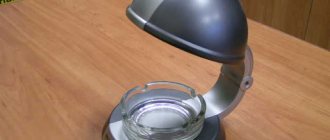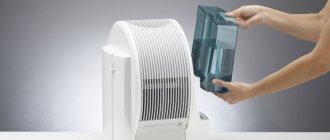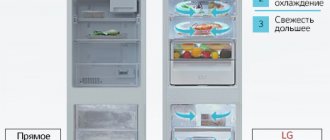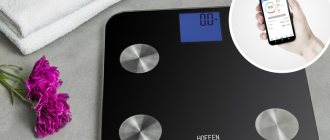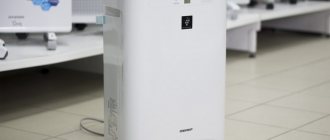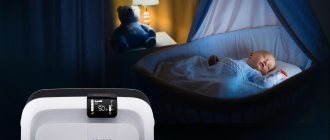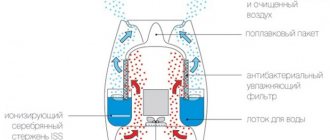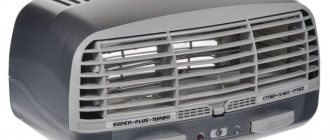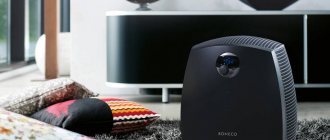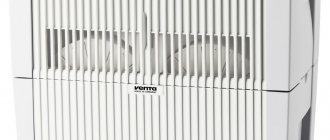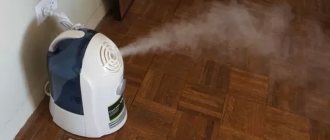In one of the previous articles, Nikita was surprised at the dirty air in Moscow (you can view the pollution index here). They say it’s a nightmare, a lot of harmful particles and you can’t breathe in it. And indeed it is.
What to do if your home air is polluted? Will a regular household cleaner do the job, or is it a waste of money?
We have found out in detail, measured and are ready to share the results of independent testing of one of the cheapest, and, at the same time, the most popular air purifiers - Xiaomi Mi Purifier 2.
ATTENTION. Testing is carried out at the expense of the editors without sponsors. The author is not interested in fraud, since he uses the tested gadget (purchased at his own expense) at home.
Air and its components: what kills us?
Conditionally harmful inclusions in the usual air that we breathe should be divided into 2 parts: inclusions from the external urban atmosphere and indoor pollution itself.
City air
The air “outside” the apartment must obey the rules described in GN 2.1.6.695-98 “Maximum permissible concentrations (MAC) of pollutants in the atmospheric air of populated areas” and a number of other regulatory documents.
According to this document, you can find almost anything outside. But in all emission zones, independent examination areas have been organized, which MUST ensure control and timely transfer of data to polluting organizations to correct the situation.
Home air
The air in our apartments is also standardized and complies with SanPiN 2.1.6.1032-01 “Hygienic requirements for ensuring the quality of atmospheric air in populated areas.”
Among the particularly dangerous air impurities characteristic of the home, it is worth mentioning formaldehyde, resins, dust (what did you think!) and a number of particles whose origin is associated with the degradation of synthetic materials: particles and fibers of plastic, asbestos, and other building mixtures.
Maximum permissible standards for components
Unfortunately, the already mentioned SanPiN 2.1.6.1032-01 does not include exact figures indicating the degree of air pollution. They are specified in GOST 12.1.005-88 “GENERAL SANITARY AND HYGIENIC REQUIREMENTS FOR WORK AREA AIR” and GOST 30494-2011 “RESIDENTIAL AND PUBLIC BUILDINGS. Indoor microclimate parameters."
According to GOST 30494-2011, the main pollutants are carbon dioxide CO2 (gas released during breathing) and CO (equivalent to emissions of finishing materials) with a maximum content for apartments of 400 cm3/m3 and 2–6 mg/m3. respectively.
The mentioned CO in real life is represented by so-called VOCs - these are gases and aerosols emitted by paints, varnishes, cleaning and disinfectants, building materials, furniture, office equipment, glues and adhesives.
For each substance, there are standards described in GOST 12.1.005-88, which can be inhaled or consumed in another way for a certain time without serious consequences for the body.
The problem with Russian regulations is the lack of mention of particle dispersion. The fact is that not only the chemical composition of impurities is important for the human body, but also the size of the inclusions.
Airborne particles are divided by size:
- large particles with a diameter > 10 µm
- PM10 fine particles with diameter
- PM2.5 fine particles with diameter
- ultrafine particles PM0.3 with a diameter
The most dangerous are the last 2 types.
Effect of PM2.5 particles on humans
PM2.5 particles are called the respirable, inhalable fraction. They are so small that they pass through biological barriers in our body: the nasal cavity, upper respiratory tract, bronchi and enter directly into the alveoli of the lungs, from where they enter the blood.
Ultrafine particles act in a similar way, but tend to accumulate in the lungs, and when they enter the blood, they act immediately and can cause an oxidative process.
How Xiaomi air purifiers work
All Mi Air Purifiers are equipped with an efficient dual fan system that can distribute clean air to the farthest corners of the space. And the built-in high-precision laser sensor accurately measures temperature, humidity and PM2.5 levels in the room, instantly responding to changes in these indicators (as mentioned above, all models except Xiaomi Mi Air Purifier 2/2H are equipped with such a sensor).
Xiaomi air purifiers operate in several modes: automatic, night and manual. In automatic mode, the purifier turns on if the sensor detects air pollution above the permissible limit. In manual mode, you activate the cleaning yourself and also select its power. Night mode is quiet and energy efficient, but the trade-off is lower performance.
You can control the purifier not only manually (there is a mode switch button on the body), but also through the Mi Home application: the built-in Wi-Fi module allows you to control the air quality at home, no matter where you are. By connecting your device to the application, you can also control it through voice assistants - Alexa, Google Assistant or Alice.
The application interface (2 screens) shows the level of PM2.5 particles, temperature, humidity and important information about the operation of Mi Air Purifier 2S. Source: fonearena.com
How to deal with harmful impurities
There are several types of home air purification devices, among which filtering devices are deservedly more popular. And that's why.
Air washers force air through a water filter, removing large particles from it. Have to wash it often.
Electrostatic cleaners first charge the air they pass through, then attract particles to the oppositely charged cleaning plate. They produce too much ozone and require constant cleaning.
Photocatalytic purifiers use a photofilter, which, by releasing certain particles, causes impurities to decompose into components, oxidize and settle on the walls of the filter. They require enormous power and are most often ineffective.
Ionic purifiers must charge air impurities in order to attract them with a special filter. Alas, not all impurities can be charged, and in general, filters of this type have unconfirmed effectiveness.
Filter purifiers pass air through several filters that capture the appropriate types of particles. Requires periodic filter replacement.
Inertial cleaners accelerate the air flow in the form of a cyclone so that the dust settles on the filter walls. Does not remove small particles.
We are testing Xiaomi Mi Purifier 2. Is there any benefit?
Xiaomi Mi Air Purifier 2 is the second modification of the air purifier from Xiaomi, designed for less polluted conditions than Beijing and Shanghai. In addition, international experts participated in its certification, so the results of the device meet international requirements, unlike previous modifications.
The device is designed to clean rooms up to 330 cubic meters in volume, or up to 46 square meters in area, using a replaceable filter combining HEPA (fine filter) and carbon.
According to official data, the purifier can purify the air from small particles hazardous to health in the categories PM0.3 - up to 99.5%, PM2.5 - up to 99.7%, formaldehyde - up to 91%, large particles hazardous to health - up to 100% .
Using the proprietary MiHome and built-in sensors, the device reports data on temperature and humidity in the room and the concentration of PM2.5 particles. In addition, if open data is available, it is possible to find out information about the air quality outside the window.
In fact, the main sensor is a dust sensor, and cannot detect the type of particles. Therefore, the device's own data are incomplete for accurately assessing indoor air quality.
However, this is enough to understand the effectiveness of the filter. No one has canceled subjective assessments either.
ATTENTION. Xiaomi Mi Purifier measures the amount of PM2.5 particles not in SI units! The values shown are the air quality index according to The World Air Quality Index .
Customer Reviews
Red Salvor
Xiaomi Mi Air Purifier Pro
A powerful air purifier that creates its own little hurricane in the apartment. I like everything about the shape, size, color, screen. The display shows information about temperature, humidity, and filter status. Half of the housing is occupied by this very huge filter, somewhat similar in shape to a car filter, but very large. They say you can program the device from your phone to an operating mode that suits you, but I haven’t tried it yet. The machine operates silently, some people complain about buzzing, I didn’t notice it. A fan, or rather a turbine, what kind of fan is it, it occupies the second half of the case, but it operates in standby mode, rotating silently. In short, I wasn’t too lazy, took out the filter and looked carefully again, it looks like there’s a snail above the filter, and there’s a fan on top, I can’t say 100%, but the thickness of the compartment with the turbine is about 25-30 centimeters, there’s something interesting there. I looked at the disassembly of a small purifier, there were two fans there, probably counter-current. What else, when you open the filter door, the device turns off so that you don’t put your fingers in the blades. Overall, the device is so simple, complete, well thought out, a workhorse. I like. It doesn’t hum like a vacuum cleaner, even at maximum power, you can hear the air hissing through the grille, you can’t hear the engine. But it hisses loudly. At night I tried the maximum speed, to hear how it was, it was great, the neighbors probably thought, what an idiot, vacuuming at night. :0)
Anatoly M.
Xiaomi Smartmi Zhimi Air Humidifier 2 CJXJSQ02ZM
If your humidifier is not detected in the Mi Home app, try selecting one of the China or US regions. In my case, the humidifier worked when I selected the US region. This can be indirectly determined this way: when you put the humidifier into setup mode, a Wi-Fi network appears with a name like zhmi-humidifier-cb1 (cb1 is an indicator of the US region). I’m not sure, but it seems very likely that this applies to devices with a European plug, and with a Chinese plug, the ca1 region is needed - China. Also read: TOP 15 best steamers: 2021 rating by price/quality and which model to choose for baby food
If the humidifier is detected in the application, but does not connect to your Wi-Fi network, and often blinks the Wi-Fi light, this means that the access point is configured incorrectly. Firstly, the humidifier only works in the 2.4 GHz network (the application itself will not allow you to select another), and secondly, in the US region only Wi-Fi channels 1-11 are available for this range (in Russia 1-13). If your Wi-Fi access point operates on channel 12 or 13, the humidifier will not be able to connect to it, although it will see it. When setting up Wi-Fi, it is recommended to either leave auto-selection or set one of channels 1, 6 or 11 in the Wi-Fi settings (these are the channels on which you and your neighbors will least interfere with each other
Alex P.
Xiaomi MiJia Air Purifier 3
For the money this is an excellent device. The price tag is adequate, both for the device itself and for the filters, just the national rate. currency is not adequate (bought for 12k in July20. Filters 2.5k +-). When selecting a mode in automation scenarios, you can only select: auto, night and manual. However, preset, three-level modes cannot be installed. You have to play with the manual mode (off-screen laughter). It’s difficult to evaluate the effectiveness, I’m not allergic, I just decided to bother with air filtration, because... I don’t live in the most favorable area, not the cleanest city in our vast city. From what has now become clear: To move air like a fan, you need to turn it very hard, it becomes a little noisy. Filters odors, with the standard filter, quite well, even at low speeds.
Maxim M.
Xiaomi Smart Antibacterial Humidifier (ZNJSQ01DEM)
I've been using it for six months, the flight is normal. 4 modes: in the slowest mode, the entire tank is used up in about a day, in medium and turbo modes 3/4 and 1/2 days, respectively, the last mode is based on the sensor. the sensor is in the housing, and therefore, of course, shows the humidity around the humidifier (suddenly). it works quietly, the fan can only be heard very close, the driver is barely murmuring, the water level is visible from any end of the room, it was identified immediately in the application, it works with a smart home. in general, he completely recaptured his money, buying it to save plants from the destructive effects of heating. the flowers immediately came to life, and I’m happy, I just pour water once a day and wipe the insides once a week. By the way, if you have a filter without osmosis and are thinking about buying an ultrasonic humidifier, get ready for the fact that after two weeks of operation the whole house will be covered with white dust) only bottled or osmotic water, unfortunately
Lab Rat
Xiaomi Smartmi Evaporative Humidifier 2 CJXJSQ04ZM
It took a long time to get the device out. The task was: no consumable filters, vertical water filling, a switchable screen or its night mode, remote control, installation on a bedside table. Both ultrasonic and steam humidifiers have already been in the house, so, in general, I am not a newbie in this matter. There is a Xiaomi brand in the house - lamps and gadgets, control applications are familiar. The humidifier turned out to be quite compact and very laconic. Installation is simple - remove the locking transport spacers in 2 places (from under the drum and between the tanks), place the upper part on the lower one. I like the cord - it does not stick out from the case, but is connected with a plug. The case itself, the cord itself, convenient. The barcode has an RU zone, the MiHome application found the device instantly, the software was immediately updated, in general, the entire connection procedure took a couple of minutes. When turned on, the automatic mode was immediately set, the screen showed a dry tank, humidity 17%. Water is poured in (just from above through the grate; those who have suffered with removable tanks will appreciate all the unimaginable beauty of the procedure). Start and... silence. The device is very quiet in automatic mode, and you will not understand that it is working. I know for sure that it works if speed 3 is turned on. The screen in the “Dim” mode is great - you can see it at night, but it doesn’t illuminate anything around it, I didn’t even have to turn off the light completely. At the same time, it is clearly visible during the day. Within 2 hours of operation, the humidity increased by 10% (I take data from a separate climate station), after 12 hours it became 36%. At night, add another 3 liters of water, regular tap water. In the morning there are no puddles, deposits, or dampness. The app has an interesting dry drying mode - when the water runs out, the device will work for another 8 hours to dry the tank from the inside, useful in terms of protecting against residual water blooming. By the way, the mode is activated by default. There is also a child lock mode - you turn it on and all control becomes possible only through the application. Timer, mode scenarios - everything is customizable. I think the purchase is excellent.
Alexey B.
Xiaomi Mi Air Purifier 3H (AC-M6-SC)
I really liked the device, clear lines, laconic design. It works perfectly, is always on in auto mode, set on a timer to turn on during the day via the mi home application. It’s in the kitchen-living room, and as soon as the smell of cooking appears, it turns on the increased ventilation. We chose a purifier without humidification, my wife has asthma and is allergic to mold, and requires dry air. In terms of price and quality, I think it’s the best option. I ordered original filters from China, with discounts of about two thousand apiece. There is an add-on for it - a humidifier, if someone needs it. Additionally, you can order wheels from the Chinese for ease of use.
Erzya
Xiaomi Smartmi Zhimi Air Humidifier 2 CJXJSQ02ZM
Convenient control via the application, as well as the ability to view humidity and temperature in the room. Possibility of complete disassembly of the drum for cleaning from hard water impurities. It is very convenient to add water without removing the top part of the humidifier. An excellent humidifier. On average, it evaporates about five liters of water per day, and at night it always works at first speed. The humidifier is located in a children's room with an area of 12.5 square meters. meter is more than enough. I also have a Venta humidifier with characteristics for 15 sq. meter, which I purchased about 8 years ago, Venta uses only about two liters of water per day. As a result, having two humidifiers (Venta and Xiaomi) in an apartment of 70 square meters. meter, air humidity is about 40-50%, depending on how low the temperature outside the window is. Once a week I wash the drum and water tank, once a month I completely disassemble the drum and wash it. You can, of course, not do this, but we have very hard water, so such a procedure will not be superfluous. In general, I definitely recommend purchasing. The device is 100% worth its money. I am very glad.
Marina V.
Xiaomi Smart Antibacterial Humidifier
A very convenient function in the mi home application, maintaining the humidity level. The room is constantly humidified and there is absolutely no need to control it. From any point, without being at home, you can turn off the device. I regret that I didn't buy it earlier! I bought it at a big discount and used the bonuses, thank you. The humidifier cost mere pennies, considering its range of functions. At the highest power in a room of 18 sq.m. Humidity reaches 40-50 in 30 minutes.
Vova R.
Xiaomi Smartmi Evaporative Humidifier 2 CJXJSQ04ZM
I like! There are 19 square meters in a room that doesn’t make it more than 50%, but you don’t need more! I don’t know about the noise, my children sleep when it works at maximum speed, it doesn’t bother them at all, on the contrary, it’s white noise))) the air is really fresher and more pleasant, the blanket has stopped electrifying and my youngest daughter doesn’t have dry boogers in the morning!! ! Oh miracle!!! This is the most important thing for which a humidifier was purchased. I connected to the application the first time without any problems. Controlling from your phone is Mega convenient! And by the way, there were doubts about air washing, but when they saw the water in the tank, they disappeared! After a week of use, the water is dirty, cloudy with clumps of dust and dirt, so it looks like it’s really sucking something into itself. Do you need to wash it more often, otherwise it ends up evaporating it?
Oleg M.
Xiaomi Mi Air Purifier 2S (AC-M4-AA)
It fulfills its function of purifying the air from small harmful particles and gases 100%. The “broken” Mi Home application installed normally, but even without the application it can work without problems, all controls and information are on the case. Suddenly, when unpacking, it was discovered that only three side faces have air intake holes, and the back wall is blank. Although the description proudly stated about 360 gr. Not a big problem, but strange, why keep silent about it? For those who are thinking of getting rid of dust, animal hair and other “visible” particles in the air - this is not the device for that! A vacuum cleaner and a humidifier will help you. Air purifier to capture pm2.5 particles invisible to the eye. He will not collect hair from the carpet. But for allergy sufferers - this is it. Separately, I would like to say about the display that it is made conveniently, that it can be turned off, but for me, you can take the model without a display. There is no particular need for it if there is an application. And also, if you don’t know what air quality is in your home, buy one first, and not for each room. After installing the purifier, I found that the air quality in the apartment was within 10-30 units, i.e. very good. It’s good that I didn’t buy it for each room at once, now I just transfer the cleaner from time to time and run it at maximum speed for 15-20 minutes a day in each room for prevention. The rest of the time he works quietly in the bedroom. At minimum speed it does not interfere with sleep at all.
Test 1. Own readings, normal conditions
The first home test was carried out in an ordinary room in a city apartment in a district of Ulyanovsk under construction. The local air cannot be compared with Moscow - less than a kilometer from the Volga, the winds of the city on seven hills and the vast park area cope well with urban impurities.
The switching-on was carried out in a closed room, which was not ventilated for 10 hours, and was not cleaned for a week (the authors make incredible self-sacrifice for you) for sufficient accumulation of dust.
Left - readings before switching on, right - after cleaning
As can be seen from the results, the home accessory copes well with common household impurities in the form of fine dust and “repair” components - substances emitted by finishing materials.
The next test was carried out with an open window, simulating external urban conditions. Outside the window there is complete calm, a hot day (rising currents from the ground raise the remaining amount of dust, there is not much of it).
Left - readings before switching on, right - after cleaning
The result is not as happy as in a completely enclosed room. However, the level of impurities does not exceed the standards established in GOST. Using a cleaner slightly reduces their level.
Test 2. Own readings, polluted air
Additional testing of the Xiaomi purifier was carried out to study its performance with the most polluted air.
Tobacco smoke, oil smoke, and burnt wood were used as air impurities. Such components qualitatively simulate emissions from thermal power plants, boiler houses and enterprises.
Left - readings before switching on, right - after cleaning
The effectiveness of the device is confirmed: Mi Purifier 2 copes with any smoke in approximately the same time, regardless of its density and saturation.
The built-in sensor probably measures an average value, since lighter tobacco smoke should settle on the filters more slowly.
What is necessary to reduce the concentration index of particles with a diameter of 2.5 microns [micrometers] from 410 to an acceptable 44 can be seen in the screenshots. However, in real conditions, longer time may be required since smoke uniformity was controlled subjectively.
The subjective assessment was made by a person entering the room after complete cleaning. There are no smoke odors, but a close inspection of the purifier suggests it needs to be ventilated.
Mi Air Purifier 2S
It is a modification of the second model and its characteristics are more consistent with the Pro version. There is a built-in OLED display and a sensitive laser sensor for determining the level of contamination (capable of recognizing particles up to 0.3 microns in size).
Its differences from the Xiaomi Air Purifier 2 air purifier lie in its coverage area, which is about 37 square meters. meters, and slightly reduced capacity (up to 310 cubic meters).
There are three modes - constant, sleep and automatic, so the user can choose the best option for himself.
Test 3. Industrial grade laboratory tests
This is how PM2.5 particles work. To confirm the functionality of the device, we used the help of an industrial cleanliness laboratory at a local company located near where I live.
The device was placed in a sealed room with a volume of 20 cubic meters, filled with air purified from impurities and PM10/2.5/0.3 particles.
Test substances were introduced into the room one by one. Cleaning percentage:
- Ammonia - 92%
- Hydrogen sulfide - 97%
- Phenol - 97%
- Methane - 99%
- Carbon dioxide - 98%
- Formaldehyde - 95%
- PM10 - 98%
- PM2.5 - 97%
- PM0.3 - 86%
The results are slightly worse than those officially declared, however, they do not reduce the effectiveness of the device, since the content of introduced substances after purification does not exceed the permissible limits.
Filters in Xiaomi air purifiers
Xiaomi Mi Air Purifier air purifiers, designed for the European market and Russia, contain HEPA (High Efficiency Particulate Arrestance) filters, which are extremely effective against PM2.5 particles. These are triple activated coconut carbon filters. They are designed to purify the air 360 degrees, removing 99% of all microparticles and pollutants, including smoke, household dust, pet dander, mold spores, pollen, formaldehyde and other harmful compounds. The Xiaomi Mi Air Purifier 3H air purifier is equipped with a HEPA 13 class filter, the filtration efficiency of which is increased to 99.95%.
HEPA filter with dust and particles settled on it. Photo: dennis-knake.de
Mi Air Purifier versions for the Asian market use a basic filter class E11 (H11). Its cleaning efficiency is slightly weaker - it is estimated at 95% or higher. At the same time, you can independently replace the original cartridge with a HEPA filter, so the difference between the “European” and “Asian” Mi Air Purifier cannot be called fundamental.
To understand which version of the cleaner is in front of you, you need to pay attention to the name. Models for the European market and Russia have an H in the name, and purifiers without a letter in it are devices for the Asian market, which are equipped with a Chinese plug.
